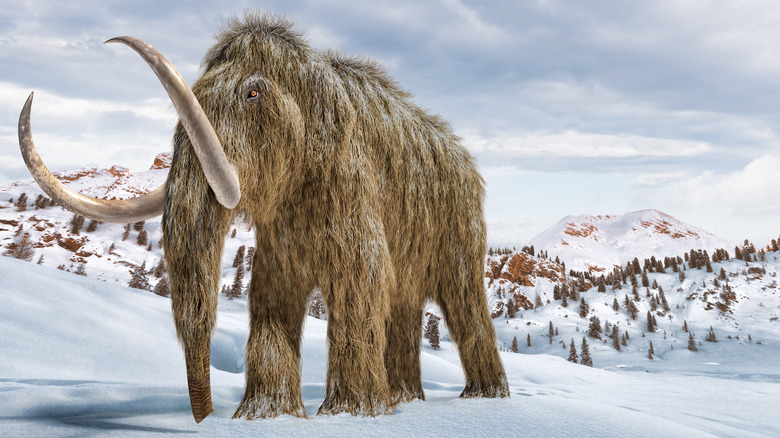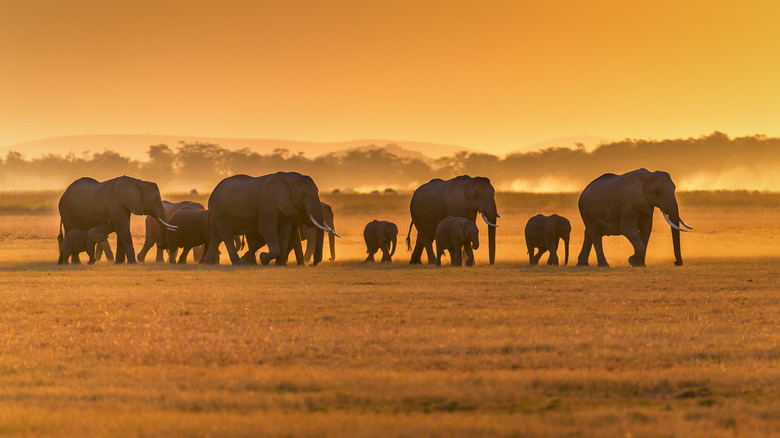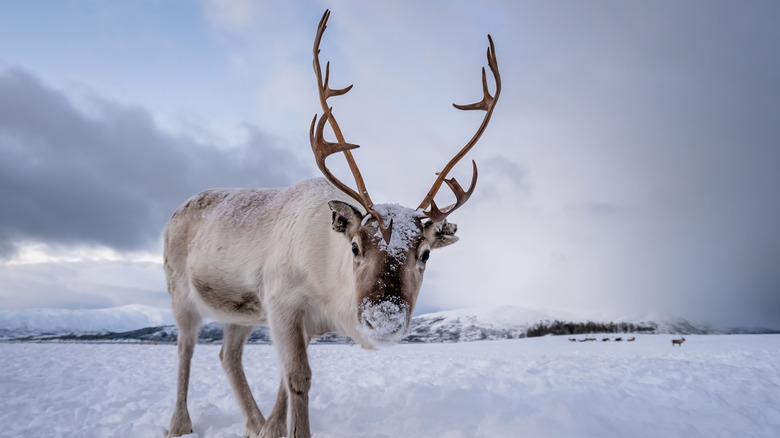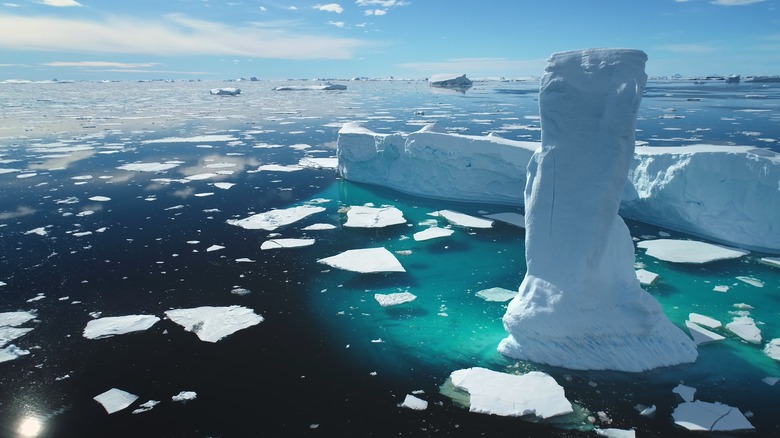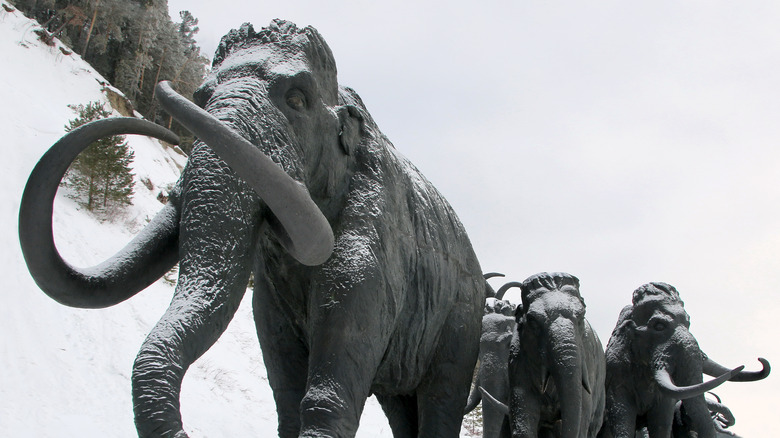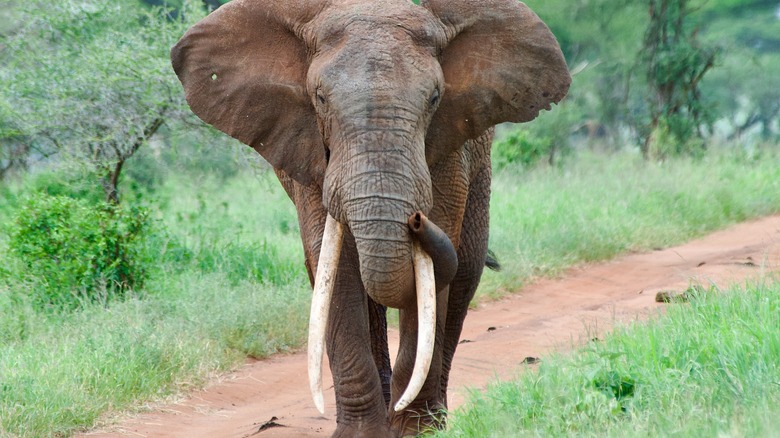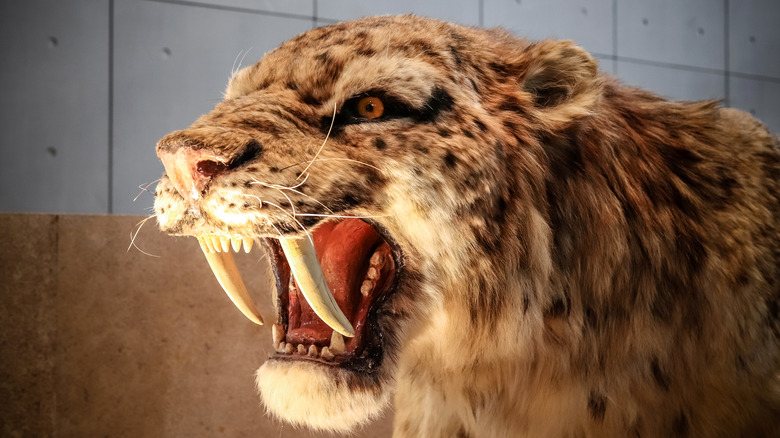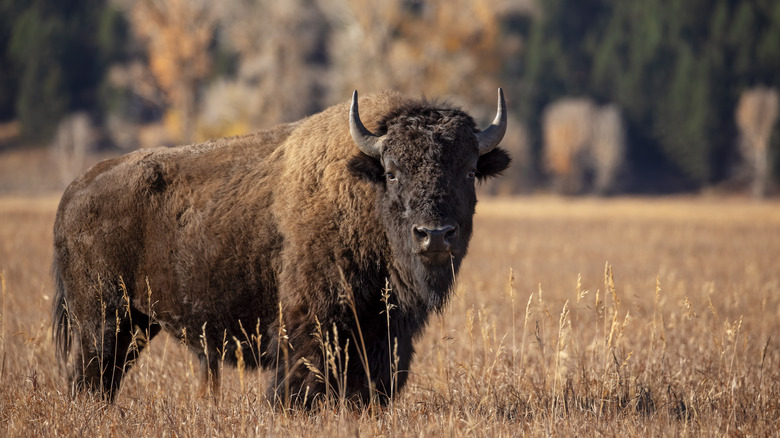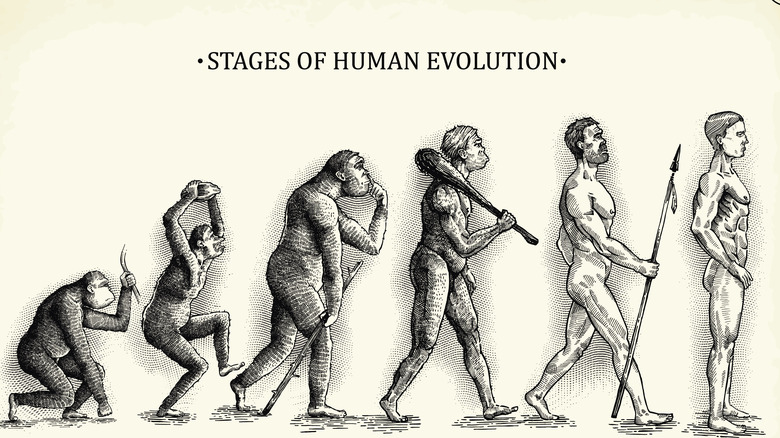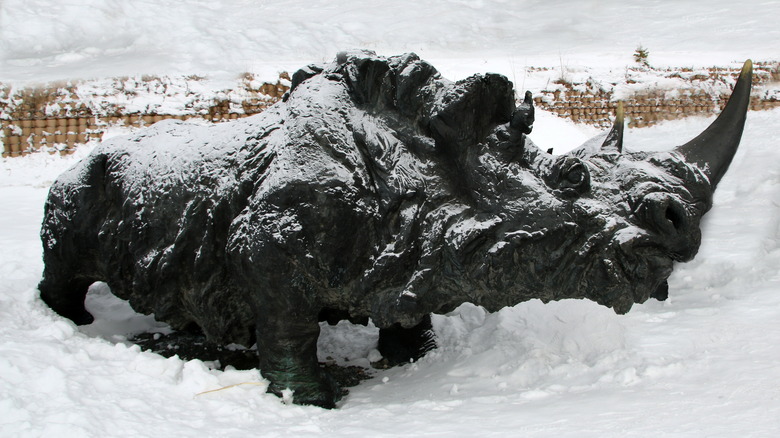What If Woolly Mammoths Never Went Extinct?
Long before global warming was the biggest environmental issue, the planet was in the opposite kind of funk — an ice age lasting around 2.6 million years. During this time, starting about 700,000 years ago, lived Mammuthus primigenius, affectionately known as the Woolly Mammoth.
These hairy giants, which are closely related to our modern Asian elephants, had a hump of fat on their back and their trademark furry coat to keep them warm in the potential -58 degrees Fahrenheit climate they lived in. They lived near the Arctic, in the area that is now Eurasia and Northern America, in a region known as the Mammoth Steppe. Contrary to popular belief and famous animated movies, this region was not covered in ice, but was instead a vast, freezing tundra that was considered the largest biome on Earth.
Despite roaming the planet for around half a million years,the end of the Ice Age signalled the demise of these megafauna, and the last ones likely died around 4,000 years ago. While the definitive reason for their extinction is uncertain, humans likely had a large part to play. But what if the woolly mammoth hadn't become extinct a few short millennia ago? How would that affect life on Earth, and us a species? As attempts to revive the famous mammal get underway, let's take a look at what may have happened if the woolly mammoth had never gone extinct in the first place.
Our ecosystem would be very different
The ecosystem during the time of the woolly mammoth was vastly different to what we live with now, and if they had never disappeared, the chances are our modern world wouldn't look like it does. The Mammoth Steppe where these megafauna roamed stretched across the Northern Hemisphere, and was home to other now extinct creatures such as steppe bison and woolly rhino, as well as prehistoric lions and reindeer.
The woolly mammoth was considered a keystone species, and in fact one of the most significant of all time, meaning it had a huge impact on the ecosystem and the other organisms within it. Their massive size meant that they impacted the environment wherever they went, flattening grass and trees, turning over soil, and, in turn, creating food and habitats for the smaller animals around them.
The mammoth played a huge role in protecting that same ecosystem, and since their disappearance, scientists estimate that much of the flora and fauna from that time period has now disappeared. If the mammoths had remained, there is a good chance that the ecosystem from that time would be intact too, at least to a greater extent than it currently is.
The evolution of modern species could have taken a different path
It's tempting to imagine how a woolly mammoth would fit alongside today's modern mammals, but if the species had never become extinct, the ripples that would have caused on the rest of the animal kingdom mean that many other species would have evolved differently. As the legendary Doc Brown once warned us, any change in the past could have devastating effects on future events, and the survival of the woolly mammoth would certainly have shaken up the original Ice Age timeline.
As one of the largest land mammals of the time, the disappearance of the woolly mammoth would have left a huge hole in the ecosystem, opening up opportunities for other species to thrive and evolve. It would have taken the pressure off of competing herbivores of the time, who managed to survive the change in climate and evolve into modern versions — rhinos, reindeer, and bison may not have followed this path had their hairy competitors still been around.
The modern elephant could also have been significantly affected, since they are closely related. Had their bigger cousins been around, extant elephants may have taken a different path, lived in alternate climates, and their evolution may have diverged from what we know. It is impossible to know what huge differences could have been caused by the survival of just one animal, but it is reasonable to assume that the evolution of certain parts of the animal kingdom would have been nudged from their current form.
Global warming may be less severe
It seems strange to think that one species of animal, no matter how enormous the size, could have an impact on the climate and temperature of the planet, but in the case of the woolly mammoth, there is a chance they could have.
Huge animals such as mammoths had an important role to play in keeping the earth cool, and had they stayed with us, the permafrost may not have begun to melt as early as it did. As woolly mammoths went about their daily business, they trampled grasses and trees, cleared snow from the ground, and alongside other large herbivores of the time, ate massive amounts of foliage. In their absence, the grasslands of the time have changed, and been replaced by trees instead. Layers of snow on the ground act as insulation, preventing the cold from truly penetrating the ground, but mammoths removing this snow helped to keep the ground cool. Nowadays, trees are absorbing more heat than the plants did millennia ago, and both of these changes have led to increasing temperatures.
Worryingly, scientists believe that the Arctic ice contains twice as much carbon frozen in the ice as there currently is in the atmosphere, so the melting of this region could be catastrophic in terms of global warming. If woolly mammoths had stuck around for a few millennia longer, we may not have ended up in the global warming crisis we find ourselves in.
Humans' interactions with mammoths would have been altered
It may be hard to imagine a scenario where humans would coexist peacefully with gigantic woolly mammoths, but most of us probably don't realize that there was a significant overlap between the emergence of modern man and the disappearance of the mammoths. Prehistoric humans definitely interacted with woolly mammoths, and would have hunted them in spite of their enormous size. The meat available from one mammoth would have kept villages fed during periods when other food was scarce, and their tusks and hides would have been extremely useful for hunting and warmth.
Had they not disappeared, would our relationship with mammoths have changed into something similar to that of modern day elephants? Our ancestors hunted elephants for meat, and now they are revered; could the same thing have happened with the woolly mammoth? We have domesticated horses and camels, so there is a reasonable chance that mammoths could have ended up being used for transport or even being worshipped during religious ceremonies. It certainly seems logical that if these majestic beasts were still around today, they would have become a significant part of human culture.
Mammoths would likely be endangered in the same way as elephants and rhinos
When we talk about woolly mammoths never having gone extinct, we tend to think of it with rose-tinted specs — where these beautiful animals would be appreciated and regarded with awe. Sadly, this is a world based on hindsight since they have disappeared, and the tragic reality is that if they were still with us, their survival prospects would be grim.
Let's face it, those sublime tusks the woolly mammoth sports would have been prime targets for poachers and the illegal ivory trade, endangering the mammoth in the process. The average elephant tusks are around 6 feet in length, but the woolly mammoth's could reach a size of as much as 13 feet. If life for humans during the Ice Age included successfully tracking and killing mammoths for meat, you can guarantee that modern-day poachers would find a way to do so, too.
Habitat loss could also be a big modern-day mammoth concern. If the climate had changed to the one we know, in spite of the survival of the mammoths, the grasslands where they thrived would be non-existent, and as the permafrost continues to melt, they would likely have found themselves the subject of a heart-wrenching David Attenborough documentary. If we are totally honest, the mammoth would have likely found itself another victim of the relentless human exploitation of animals.
Other megafauna may still exist, too
If the woolly mammoth were not extinct, it would be sensible to assume that the reasons for its extinction — probably climate change and pesky humans — must have transpired differently. This being the case, the other megafauna that disappeared at roughly the same time would likely have survived, too.
The end of the Pleistocene epoch saw the demise of many huge mammals, from their close cousins the mastodons to giant ground sloths and cave bears. These animals were big players during the Ice Age, and more than 70% of the megafauna in North America were wiped out as this period came to an end. Even the mighty saber-toothed tiger succumbed during the Quaternary extinction.
With this in mind, a modern world where the mammoth was still roaming would mean that many of these enormous creatures would have survived alongside them. It is difficult to predict what impact that would have had on prehistoric humans, but we can assume that it would have affected the way we moved across the globe, potentially resulting in a very different human world today.
Alternative species may have ended up extinct as a result
We may think that the woolly mammoth avoiding extinction would have been a huge benefit to the ecosystem, but we have to consider what negative impact that would have had on the animals that did survive. During their time, mammoths were very much the dominant herbivore, and smaller species may have found it more difficult to thrive in their presence.
Though a huge number of megafauna were killed off during the Quaternary extinction at the end of the Pleistocene, smaller mammals were largely unaffected, and it is likely that the disappearance of their huge competitors gave them the chance to finally flourish. Herbivores such as deer, bison, and elk all survived the extinction and are still going strong 10,000 years later, but had the woolly mammoth been around, this may not have been the case. The mammoth, with its immense physical strength, could have shaped the landscape around these smaller animals and eaten much of their preferred foliage, which could have had a devastating impact on their chance of survival. In nature, even the tiniest change can cause a huge ripple through the rest of the ecosystem, so it is safe to assume that a mammoth-sized change would have sent a shockwave through it.
Mammoths may have further evolved
The non-extinction of woolly mammoths conjures images of these enormous beasts roaming among us with their gigantic tusks and shaggy coats. But since the surviving mammals have undergone their own evolution to adapt to the warmer climate, it is safe to presume that a modern-day woolly mammoth would look different to the famous sight we are familiar with.
There is a good reason that during the Ice Age, many animals were far larger compared to their modern versions. Large bodies are a big advantage in cold temperatures, and even the size of humans has varied depending on the climate. The more weight an animal is carrying, the less heat it loses, and the more fat it can store to see it through periods of famine due to the cold. As the climate warmed, it is possible that extant woolly mammoths would have found themselves losing the "mega" of megafauna and shedding some or all of their furry coat in the process. In fact, it may have been the case that the differences between elephants and mammoths would become nearly nonexistent.
The de-extinction project would be attempting to bring other animals back instead
In recent years, there has been a serious effort to bring back certain animals from extinction, and as expected, the woolly mammoth has the biggest focus on it. Of course, if it was never extinct, there would be no need to bring it back, which may mean attempts would be made to revive other extinct megafauna instead.
Colossal Laboratories and Biosciences are in the process of bringing back the mammoth from extinction, by creating an elephant-mammoth hybrid that will be birthed by an Asian or African elephant. The plan is to engineer a mammal that is genetically predisposed to be adapted to cold weather, so that the Mammoth Steppe ecosystem can be revived, which could have a huge impact on climate change.
An alternative de-extinction project if the mammoth had survived could potentially be the woolly rhino. They lived in the Mammoth Steppe alongside the woolly mammoth, and recent discoveries mean that DNA of the woolly rhino has been used to work out their mitochondrial genome. Does this mean that the woolly rhino would have been the poster child for de-extinction in the mammoth-filled alternative universe? In the end, we have no idea, but speculating about the extinction of this superb prehistoric beast gives us a chance to consider the huge impact that a species can have on the entire animal kingdom. Hopefully it can also help us to see how much we have to lose if some of our most precious modern-day animals meet the same fate.
